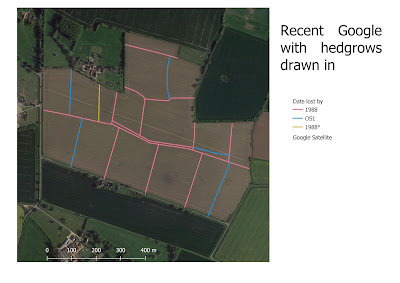Yesterday came the news that a social housing development in
Norwich had won the prestigious RIBA Stirling prize. Goldsmith Street is a mix
of 105 dwellings from 1-bed flats to 4-bed flats built to the iconic “Passivhaus”
standard.
The BBC website
described it thus:
Riba said the estate's
environmental credentials made it a "beacon of hope" and highly
unusual for a mass housing development.
However, there is more to “environmental credentials” than
heating energy required. There is also ecology. I noted in the background of photos
accompanying the BBC article what looked like American paper birches, Betula
papyrifera. B. papyrifera is a stock tree for developers, and a species that causes
ecologists to grind their teeth. Unlike the native silver birch Betula pendula,
B. papyrifera has essentially zero ecological value. This is because native aphids
do not colonise it, which in turn eliminates an important source of food for
urban birds like blue tits. You might as well (and I am almost serious) plant a
plastic tree instead.
 |
| Moribund paper birch at Goldsmith St |
I walked over to have a look yesterday to confirm my
suspicions. Sure enough, there are plenty of paper birches around, particularly
in the central communal area described by the chair of the prize judges as “lushly-planted.”
(Quoted in the EDP).
I would instead describe it as a monosward of rye grass, apparently moribund
trees of zero ecological value, and a token flower bed (I did see a honey bee
visiting a ?Heuchera? – that was the only non-human animal life I saw on my
visit). Elsewhere there were field maples, which do have a good ecological value.
It is notable that the original ecological appraisal for the development (Wild
Frontier Ecology 2014; available after much digging on the Norwich City Council
planning portal, case 15/00272/F) nowhere invites the use of B. papyrifera.
The same article in the EDP gives the cost of the development at £17 million,
for 45 1-bed flats, 40 2-bed houses, three 2-bed flats and five 4-bed flats,
for a cost of about £112 grand per bedroom. (Apparently adding up to 103, not 105.) At such cost, there ought to be a
few quid spare for wildlife.
Final observation, not ecological: I could not help but notice that, a day after taking the prize, the
mortar was already crumbling out of several of the windows. Mix too sandy perhaps? Who knows. Such
trifles obviously don’t concern the wise minds at RIBA.
 |
| Mortal mortar |





